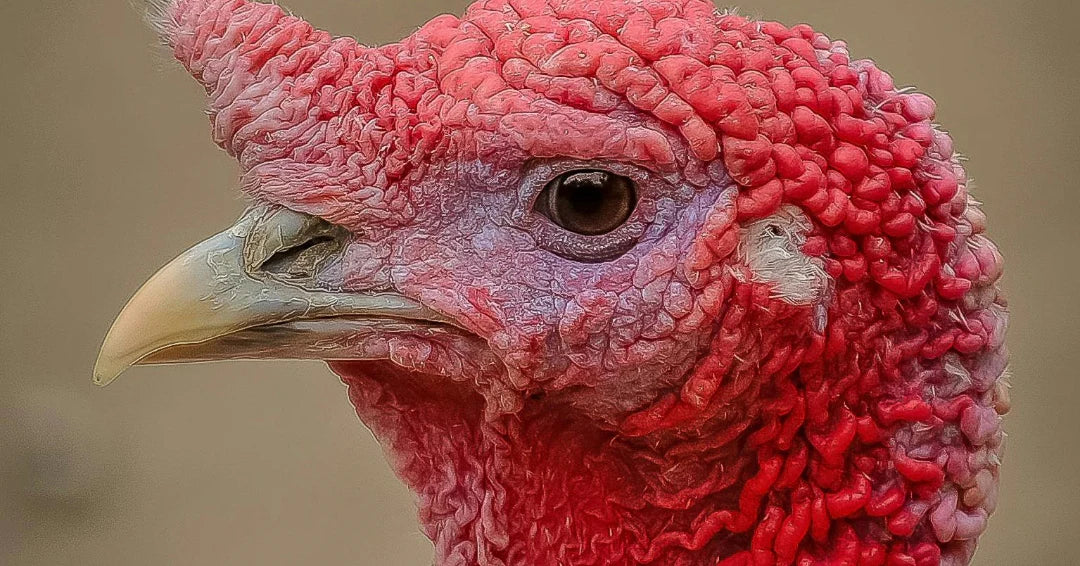Big birds take center stage at Thanksgiving day feasts, where the conversation is usually about it was prepared for the meal. Animated discussions revolve around whether it tastes best roasted, braised, deep-fried, grilled, or roasted. to add another dimension to the talk track, read through some of these fascinating facts about turkeys. And if you want to teach you children more about what they are eating, here are some pretty interesting tidbits about what life is like for turkeys who avoid the oven.

Information About Turkeys To Share This Thanksgiving
There are so many interesting things to learn about how turkeys socialize, defend themselves against predators, and live carefree on farms or in the wild, completely unaware of their fate. These birds exhibit some pretty odd behavior that separate them from almost every other species. Next time you gather around the table to carve a bird for a delicious family gathering, everyone will enjoy hearing all about what life was like for the feathered friend before landing on the serving dish. Also, be sure to grab some fun children's books about these plucky birds.

Turkey Anatomy
(1) Turkeys have remarkable daytime vision.
They can see three times better than human being with 20/20 vision. Also, these incredible birds can see distances eight times farther with much better color vision, and their sight spans 270 degrees. Experts believe turkey vision has evolved over millions of years in order to protect the species from predators and facilitate mating. Interestingly, they do not have 3D vision, which is why you often see turkeys bobbing their heads. This behavior is a way of collecting visual information about their surroundings. Also, while their daytime visual acuity is excellent, nighttime vision is extremely poor.
(2) Most turkeys have between 3,500 and 6,000 feathers.
Counting the number of turkey feathers is no easy task. Perhaps this is the reason why a wildlife organizations differ on their estimates. For instance, the National Turkey Federation stands behind their data that indicates mature turkeys have 3,500 feathers, although other organizations have indicated much higher numbers.
(3) You can learn a lot about turkeys by their poop.
The stinky truth is that by examining the fecal output, or turkey scat, you can discover quite a bit about the bird who left the mess. The first clue is the shape of the poo. Male turkeys produce j-shaped feces while females leave behind a spiral-shaped pile. A second clue lies in the diameter of the turd. The older the bird, the larger the waste matter it produces.
(4) A turkey named Tyson won the Guinness World Record for biggest turkey.
A gigantic turkey born and bred in the UK weighed in at an incredible 86 pounds. At the final heaviest turkey competition held on December 12, 1989, the bird broke a record for his dressed weight, also referred to as the carcass weight. Typically, the dressed weight is about 75-80% of the body weight after the head, internal organs, and other parts have been removed.

Turkeys Can Fly
(5) Wild turkeys spend the day on land, but fly up into the trees to sleep.
This behavior, called roosting, is the only way they can stay safe from predators at night. Coyotes and foxes come out to hunt after the sun sets. Since turkeys cannot see well in darkness, they often cannot identify threats until it is too late. They typically find trees with branches beneath the canopy from which they can hop up to safety. Turkeys are not fond of deeply wooded areas. Rather, you might be lucky enough to spot them as high as 30 feet up in Oak, Pine, Sycamore, and Cottonwood trees located in more open areas.
(6) They can fly fast but only for short distances.
The threat of a predator is enough for a wild turkey to take flight, reaching speeds up of to 55 miles per hour. Some can fly as far as a quarter mile, but most of the time they travel only shorts distance of 100 yards. Most of the time, the prefer to be on the ground socializing with others. And as for the birds raised on farms for consumption purposes, their plump stature prevents them from ever lifting off.

How Turkeys Socialize
(7) Turkeys' heads change colors based on their emotional state.
They can turn red, blue or white depending on how calm or excited they feel. These color changes are an important part of how turkeys communicate with each other. When a turkey is feeling angry or threatened in some manner, its head will turn a deep, dark red. If the situation abates and the bird calms down, the head will turn a lighter shade of blue. During breeding season, it is common for male turkeys to have red heads, indicating an intense period of arousal and excitement. Bundles of collagen mixed with a high density of blood vessels attribute to the change colors.
(8) The maternal instinct of turkeys extends beyond their own offspring.
Turkeys exhibit interesting socialization behaviors that are far more complicated than one might think. In particular, the bond between a mother and her poult (or baby turkey) begins before the newborn even hatches. Distinctive communication patterns have been observed by mama turkeys who are looking over their eggs. Once the chicks are born, they travel close with their mothers, who have been observed to, both literally and figuratively, take other little turkeys under her wing.

Lifespan of Turkeys
(9) Turkeys have very short lifespans, typically only surviving for about three to four years.
The reality is that many turkeys in the wild actually never make it past their first year. They are subject to many threats that cut their lives short, like hunters, poachers, predators, disease, and even accidents. When living in captivity, their time to roam the earth extends to about ten years. And as for the birds raised on turkey farms? Well, they are usually here for a short five to six months before being sent to the slaughterhouse.
(10) The oldest turkey to ever live reached 18 years of age.
Laredo was quite the attraction at a Cheyenne Mountain Zoo in Colorado Springs. For visitors who don't know much about the longevity of these birds, his age might not seem remarkable. But given the fact that even the healthiest ones don't usually make it past 7, this senior citizen holds a record that will be hard to break. Laredo has his caregivers to thank for enjoying so many healthy years. Living in captivity with no risk of predators getting to him, the bird was fed a healthy diet and provided pain medication during his later years. Another secret to his longevity? Some surmise his happiness and socialization with other birds may have played a factor.

Number of Turkeys Consumed Annually
(11) Approximately 50 million turkeys are consumed each year on Thanksgiving.
Although turkeys are most closely associated with Thanksgiving Day feasts, these birds are part of meals throughout the year. In fact, almost 300 million turkeys are slaughtered worldwide for consumption purposes. But to put matters in perspective, Americans spend an estimated $1.3 billion on turkeys every Thanksgiving. California consumes more turkeys than any other state, and Minnesota raises more of these birds than anywhere else in the country.
(12) Approximately 2,500 turkey farms raise birds for consumption across the U.S.
These farms collectively raise 210 million turkeys every year. They live in specialized barns that keep them safe from predators and extreme weather conditions. The birds are fed a healthy diet of corn and soybean meal supplemented by vitamins and minerals. It takes about 18 weeks for a tom to reach its marketability weight of 38 pounds, while only 14 weeks for a hen to reach her weight of almost 16 pounds before ready.





